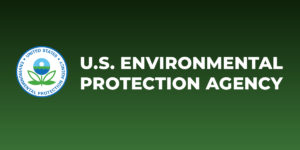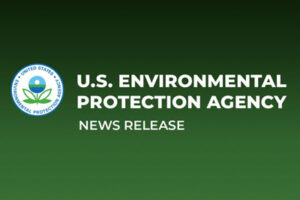
On October 18, 2021, EPA Administrator Michael S. Regan announced the agency’s PFAS Strategic Roadmap—laying out a whole-of-agency approach to addressing PFAS.
The roadmap sets timelines by which EPA plans to take specific actions and commits to bolder new policies to safeguard public health, protect the environment, and hold polluters accountable. The actions described in the PFAS Roadmap each represent important and meaningful steps to safeguard communities from PFAS contamination. Cumulatively, these actions will build upon one another and lead to more enduring and protective solutions.
Read an overview of the PFAS Strategic Roadmap and learn more about key actions below, or read the complete PFAS Strategic Roadmap (pdf) .
On this page:
- EPA Council on PFAS
- EPA’s Approach
- Partnering for Progress
- Goals
- Key Actions
- EPA Accomplishments since January 20, 2021
EPA Council on PFAS
EPA Administrator Michael Regan established the EPA Council on PFAS in April 2021 and charged it to develop a bold, strategic, whole-of-EPA strategy to protect public health and the environment from the impacts of PFAS.
- The PFAS Council developed the PFAS Strategic Roadmap to lay out EPA’s whole-of-agency approach to tackling PFAS and set timelines by which the Agency plans to take concrete actions during the first term of the Biden-Harris Administration to deliver results for the American people.
- The Council is comprised of senior technical and policy leaders from across EPA program offices and Regions and is chaired by Assistant Administrator for Water Radhika Fox and Acting Region 1 Administrator Deb Szaro.
EPA’s Approach
EPA’s approach is shaped by unique challenges posed by PFAS contamination. EPA cannot solve the problem of “forever chemicals” by tackling one route of exposure or one use at a time. Rather, the EPA needs to use every tool in its tool box. Our approach is centered on the following principles:
Consider the Lifecycle of PFAS
EPA will account for the full lifecycle of PFAS, their unique properties, the ubiquity of their uses, and the multiple pathways for exposure.
Get Upstream of the Problem
EPA will bring deeper focus to preventing PFAS from entering the environment in the first place—a foundational step to reducing the exposure and potential risks of future PFAS contamination.
Hold Polluters Accountable
EPA will seek to hold polluters and other responsible parties accountable for their actions and for PFAS remediation efforts.
Ensure Science-Based Decision-Making
EPA will invest in scientific research to fill gaps in understanding of PFAS, to identify which additional PFAS may pose human health and ecological risks at which exposure levels, and to develop methods to test, measure, remove, and destroy them.
Prioritize Protection of Disadvantaged Communities
When taking action on PFAS, EPA will ensure that disadvantaged communities have equitable access to solutions.
Partnering for Progress
As EPA takes the actions outlined in the roadmap, the Agency is committed to transparent, equitable, and inclusive engagement with all stakeholders to inform the Agency’s work.
With the release of the roadmap, EPA is beginning a national engagement effort as it seeks to partner for progress on PFAS. These include:
- National webinars. In the coming weeks, EPA will hold national public webinars to share the strategic roadmap and the actions EPA has announced.
- Stakeholder listening sessions. EPA will be conducting a series of stakeholder briefings with non-governmental organizations; Congressional stakeholders; Federal agency partners; Tribal, state and local governments; environmental justice organizations; and industry groups.
- A focus on impacted communities. As outlined in the roadmap, EPA will also engage directly with affected communities in every EPA region to hear how PFAS contamination impacts their lives and livelihoods, building on a recommendation from EPA’s National Environmental Justice Advisory Council.
Goals
EPA’s integrated approach to PFAS is focused on three central directives:
- Research. Invest in research, development, and innovation to increase understanding of PFAS exposures and toxicities, human health and ecological effects, and effective interventions that incorporate the best available science.
- Restrict. Pursue a comprehensive approach to proactively prevent PFAS from entering air, land, and water at levels that can adversely impact human health and the environment.
- Remediate. Broaden and accelerate the cleanup of PFAS contamination to protect human health and ecological systems.
Key Actions
Each of the actions described in the roadmap is an important and meaningful step to safeguard communities from PFAS contamination. The risks posed by PFAS, however, demand that the Agency attack the problem on multiple fronts at the same time and leverage the full range of EPA’s statutory authorities to confront the human health and ecological risks of PFAS. Cumulatively, these actions will build upon one another and lead to more enduring and protective solutions. As outlined in greater detail in the PFAS Strategic Roadmap (pdf) , EPA will be taking the following key actions:
Office of Chemical Safety and Pollution Prevention
- Publish a national PFAS testing strategy to deepen understanding of the impacts of categories of PFAS, including potential hazards to human health and the environment. (National Testing Strategy released October 2021)
- Ensure a robust review process for new PFAS under the Toxic Substances Control Act to ensure these substances are safe before they enter commerce. (ongoing)
- Review existing PFAS under TSCA to ensure existing PFAS are being used in ways that do not present concerns, and to prevent resumed production of legacy PFAS or their use in new ways. (expected summer 2022 and ongoing)
- Enhance PFAS reporting under the Toxics Release Inventory by proposing a rulemaking to remove exemptions and exclusions for toxic chemical reporting. (expected spring 2022)
- Finalize new PFAS reporting under TSCA Section 8 to better characterize the sources and quantities of manufactured PFAS in the United States. (expected winter 2022)
Office of Water
- Undertake nationwide monitoring for PFAS in drinking water under the fifth Unregulated Contaminant Monitoring Rule, significantly expanding the number of drinking water systems participating in the program, pending sufficient appropriations by Congress. (expected fall 2021)
- Establish a national primary drinking water regulation for PFOA and PFOS that would set enforceable limits and require monitoring of public water supplies, while evaluating additional PFAS and groups of PFAS. (proposed rule fall 2022, final rule fall 2023)
- Publish the final toxicity assessment for GenX and five additional PFAS—PFBA, PFHxA, PFHxS, PFNA, and PFDA—to better understand their human health and environmental effects. (expected fall 2021 and ongoing)
- Publish health advisories for GenX and PFBS based on final toxicity assessments to enable tribes, states, and local governments to inform the public and take appropriate action. (expected spring 2022)
- Restrict PFAS discharges from industrial sources through a multi-faceted Effluent Limitations Guidelines program to proactively establish national technology-based regulatory limits, including progress on the nine industrial categories in the proposed PFAS Action Act of 2021. (expected 2022 and ongoing)
- Leverage National Pollutant Discharge Elimination System permitting to reduce PFAS discharges to waterways to reduce discharges of PFAS at the source and obtain more comprehensive information through monitoring on the sources of PFAS and quantity of PFAS discharged by these sources. (expected winter 2022)
- Publish improved analytical methods to enable 40 PFAS to be monitored in eight different environmental matrices, and to update methods for drinking-water monitoring. (expected fall 2022 and fall 2024)
- Publish final recommended ambient water quality criteria for PFAS for aquatic life and human health to help Tribes and states develop standards, write permits, and assess cumulative impacts. (expected winter 2022 and fall 2024)
- Enhance data availability on PFAS in fish tissue to better assess the impacts of PFAS on the aquatic environment and to inform federal, state, and Tribal efforts to set PFAS fish advisories. (expected summer 2022 and spring 2023)
- Finalize risk assessment for PFOA and PFOS in biosolids that will serve as the basis for determining whether regulation of PFOA and PFOS in biosolids is appropriate. (expected winter 2024)
Office of Land and Emergency Management
- Propose to designate certain PFAS as CERCLA hazardous substances to require reporting of PFOA and PFAS releases, enhance the availability of data, and ensure agencies can recover cleanup costs. (proposed rule expected spring 2022, final rule expected summer 2023)
- Issue advance notice of proposed rulemaking on various PFAS under CERCLA to seek public input on whether to similarly seek CERCLA designation of other PFAS. (expected spring 2022)
- Issue updated guidance on destroying and disposing PFAS to reflect public comments on interim guidance and to reflect newly published research results. (expected fall 2023)
Office of Air and Radiation
- Build the technical foundation to address PFAS air emissions to identify sources, develop and finalize monitoring approaches for stack emissions and ambient air, develop information on cost-effective mitigation technologies, and increase understanding of the fate and transport of PFAS air emissions—to inform potential regulatory and non-regulatory mitigation options. (expected fall 2022 and ongoing)
Office of Research and Development
- Develop and validate methods to detect and measure PFAS in the environment, including additional targeted methods for detecting and measuring specific PFAS, non-targeted methods for identifying unknown PFAS in the environment, and exploring “total PFAS” methods. (ongoing)
- Advance the science to assess human health and environmental risks from PFAS by developing human health toxicity assessments under EPA’s Integrated Risk Information System program; by compiling and summarizing available and relevant scientific information; by identifying PFAS sources, transport, and exposure pathways; and by characterizing how exposure to PFAS may contribute to cumulative impacts on communities. (ongoing)
- Evaluate and develop technologies for reducing PFAS in the environment to inform decisions on drinking water and wastewater treatment, contaminated site cleanup and remediation, air emission controls, and end-of-life materials management. (ongoing)
Cross-Program
- Engage directly with affected communities in every EPA region to hear how PFAS contamination impacts their lives and livelihoods, building on a recommendation from EPA’s National Environmental Justice Advisory Council. (expected fall 2021 and ongoing)
- Use enforcement tools to better identify and address PFAS releases at facilities, as appropriate, to require actions by responsible parties, to limit future releases, and to address existing contamination. (ongoing)
- Accelerate public health protections by identifying PFAS categories—based on toxicological data for hazard assessment and decision-making, and based on removal technologies. (expected winter 2021 and ongoing)
- Establish a PFAS Voluntary Stewardship Program to challenge industry to go above and beyond regulatory or compliance requirements to reduce overall releases of PFAS into the environment. (expected spring 2022)
- Educate the public about the risks of PFAS to help the public understand what PFAS are, how they are used, and how they can impact their health. (expected fall 2021 and ongoing)
- Issue an annual public report on progress towards PFAS commitments included in this roadmap, as well as future actions the Agency may take. (winter 2022 and ongoing)



